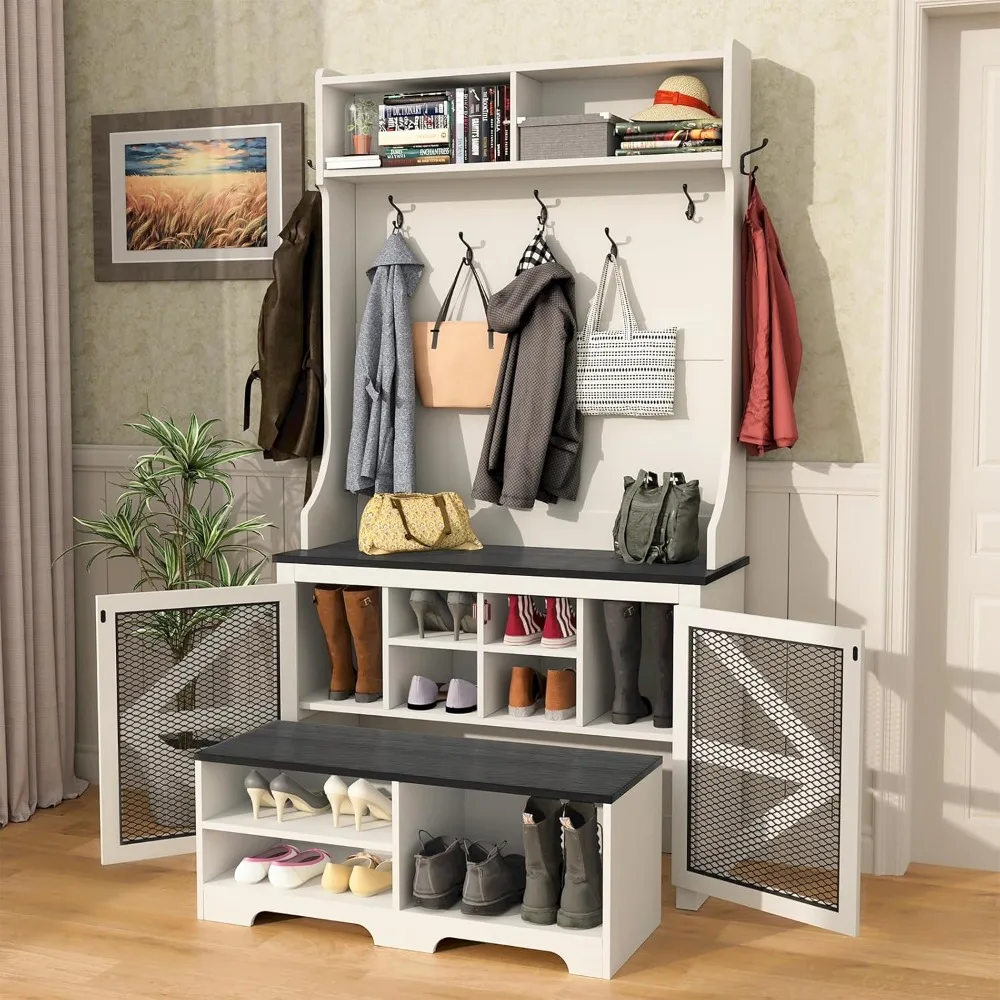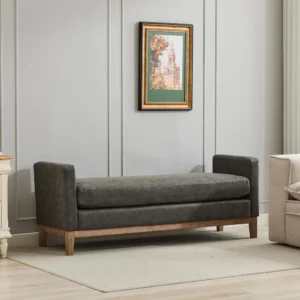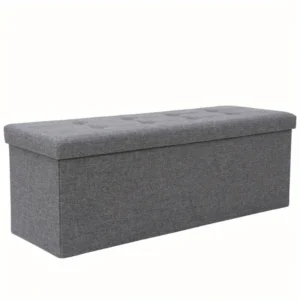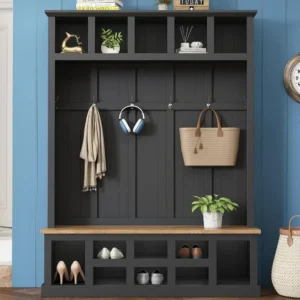Have you ever wondered why a mudroom is called exactly that? Unlike many rooms in our homes with names that have evolved from ancient languages or historical contexts, the mudroom bears a refreshingly straightforward title that directly describes its primary purpose. Let’s explore the origins of this practical space and how it continues to serve modern homes.
What Is a Mudroom and Why Is It Named That Way?
A mudroom is exactly what its name suggests—a room designed specifically to contain mud and dirt. This transitional space between the outdoors and indoors serves as a buffer zone where family members can remove dirty footwear, wet coats, and other soiled items before entering the main living areas of the home.
The name stems from its most basic and essential function: containing the “mud” that would otherwise be tracked through the house. While other rooms in our homes might have names derived from their historical uses or architectural traditions (like parlors, foyers, or drawing rooms), the mudroom stands out with its practical, no-nonsense title that directly reflects what happens inside.
Unlike spaces named for activities (dining room) or positions in the home (basement), the mudroom is one of few rooms explicitly named for what it contains and controls—mud, dirt, and outdoor debris. This direct naming convention speaks to the room’s purely practical origins in American homes.
Understanding the complete functionality of a mudroom in a house helps homeowners appreciate why this space deserves its dedicated name and purpose. For those looking to enhance this essential transition area, specialized mudroom benches provide both style and functionality.
The Essential Functions of a Mudroom: More Than Just Mud
While the name focuses on mud containment, today’s mudrooms serve multiple critical functions that protect your home and enhance organization:
Containing outdoor elements – Beyond just mud, these spaces trap moisture, snow, sand, grass clippings, and other debris from entering your home
Transitional storage – Providing dedicated storage for items that move between indoors and outdoors like jackets, boots, umbrellas, and sporting equipment
Protecting interior spaces – Creating a buffer zone that prevents damage to interior flooring, furniture, and finishes from water, dirt, and salt
Family organization – Offering personalized storage solutions that help family members keep track of essentials needed when leaving the house
The functionality of a mudroom adapts to different regional needs. In snowy climates, it becomes a critical space for removing wet, salty footwear and drying snow gear. In rainy regions, it provides hooks and drainage for wet raincoats and umbrellas. Even in drier climates, it helps contain dust, sand, and other outdoor particles.
Most mudrooms contain practical elements like coat hooks, shoe racks, benches for sitting while removing footwear, and storage cubbies or lockers. A well-designed mudroom bench serves as both seating for removing shoes and storage for organizing outdoor gear. For efficient organization of footwear, specialized mudroom bench shoe storage solutions prevent clutter while containing dirt.
The Historical Evolution of the Mudroom Concept
The concept of the mudroom has rural and agricultural roots. Long before it had an official name, farmhouses featured back entrances where family members could remove muddy boots and soiled work clothes before entering the main house. These utility spaces were a practical necessity in rural settings where unpaved roads and farmwork guaranteed muddy conditions.
As American housing evolved, so did this practical space. What began as a simple back porch or entry area gradually developed into a more defined room with specific features designed to manage the transition between outdoors and indoors.
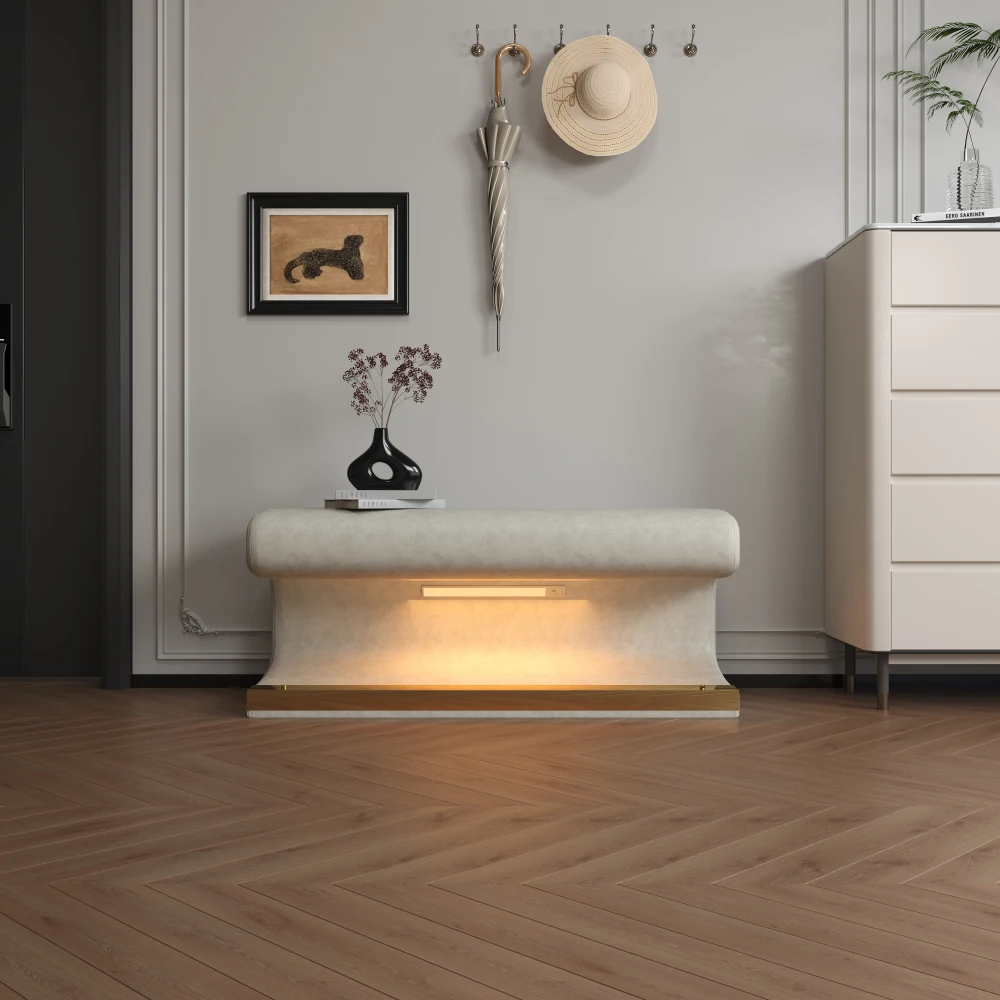
The term “mudroom” itself began appearing more frequently in architectural discussions in the 1950s, reflecting post-war suburban development and changing home layouts. However, the concept only became mainstream in home design during the 1980s, when larger houses and more elaborate floor plans made dedicated transition spaces feasible for average homeowners.
Several factors contributed to the mudroom’s rise in popularity:
- The growth of automobile-centered suburban living created a need for organization near garage entrances
- Increased participation in outdoor recreational activities generated more gear to store
- The trend toward open floor plans heightened the desire to hide clutter from main living spaces
The evolution of space-saving entryway benches has paralleled the development of the mudroom itself, with both concepts focusing on maximizing functionality in transition spaces. For those who appreciate traditional aesthetics, farmhouse mudroom benches capture the historical roots of these practical spaces.
Mudrooms vs. Boot Rooms: Regional Name Variations
While “mudroom” is the standard term in North America, similar spaces exist around the world under different names. In the United Kingdom and parts of Europe, the equivalent space is typically called a “boot room”—another straightforward name reflecting the room’s purpose of storing boots and outdoor footwear.
The differences between mudrooms and boot rooms are subtle but noteworthy:
- Terminology origin: “Mudroom” emphasizes containing dirt and debris, while “boot room” focuses on footwear storage
- Typical features: Boot rooms traditionally place greater emphasis on vertical storage for Wellington boots and outdoor footwear, while mudrooms might allocate more space for a variety of gear
- Historical context: Boot rooms have stronger associations with country estates and hunting lodges in British tradition, while mudrooms evolved from practical farm necessities in American homes
Despite these regional differences in terminology, both spaces serve essentially the same purpose: creating a transition zone that prevents outdoor elements from entering the main home. The naming conventions across cultures reinforce how the functionality directly influences what we call these spaces.
Providing comfortable seating at entry points is essential regardless of what you call the space, as highlighted in our guide to front door bench companions that enhance any entrance area.
How Mudrooms Differ from Other Home Entrances
To truly understand why the mudroom deserves its specific name, we should examine how it differs from other entrance areas in the home:
| Feature | Mudroom | Foyer/Entry Hall | Vestibule |
|---|---|---|---|
| Primary purpose | Utility and dirt containment | Welcome and first impression | Weather buffer |
| Typical location | Side or back entrance | Main entrance | Just inside front door |
| Flooring | Durable, water-resistant (tile, vinyl) | Decorative, welcoming (hardwood, marble) | Durable but presentable |
| Furniture | Storage benches, hooks, cubbies | Console table, mirror, decor | Minimal, often just a small table |
| Design priority | Function over form | Aesthetics and impression | Compact protection |
The key distinction lies in purpose and placement. While foyers and entry halls serve as formal welcome spaces with an emphasis on aesthetics, mudrooms prioritize functionality with materials and designs chosen specifically for durability and dirt management. Unlike a vestibule, which primarily serves as a small area to buffer temperature changes, a mudroom is explicitly designed to contain mess.
These spaces often work together in modern homes. A formal foyer might welcome guests at the front door, while a mudroom serves family members entering through a side or garage entrance. Each space has distinct purposes reflected in their names and designs.
For versatile seating options that work in various entrance types, explore our collection of entryway benches that complement different home styles and entrance configurations.
Anatomy of an Effective Modern Mudroom
A well-designed mudroom that truly lives up to its name contains several key elements:
Durable Flooring
The foundation of any proper mudroom is flooring specifically chosen to withstand moisture, dirt, and heavy traffic. Materials like ceramic tile, natural stone, slate, luxury vinyl, or sealed concrete create surfaces that can be easily cleaned and won’t be damaged by water or grit.
Strategic Storage
Effective storage solutions prevent clutter while containing outdoor elements:
– Wall-mounted hooks at varying heights accommodate coats, bags, and accessories
– Bench seating provides a place to sit while removing footwear
– Cubbies or lockers offer personalized storage for family members
– Cabinets with doors conceal seasonal items or less attractive necessities
– Boot trays or drainage systems manage water from wet items
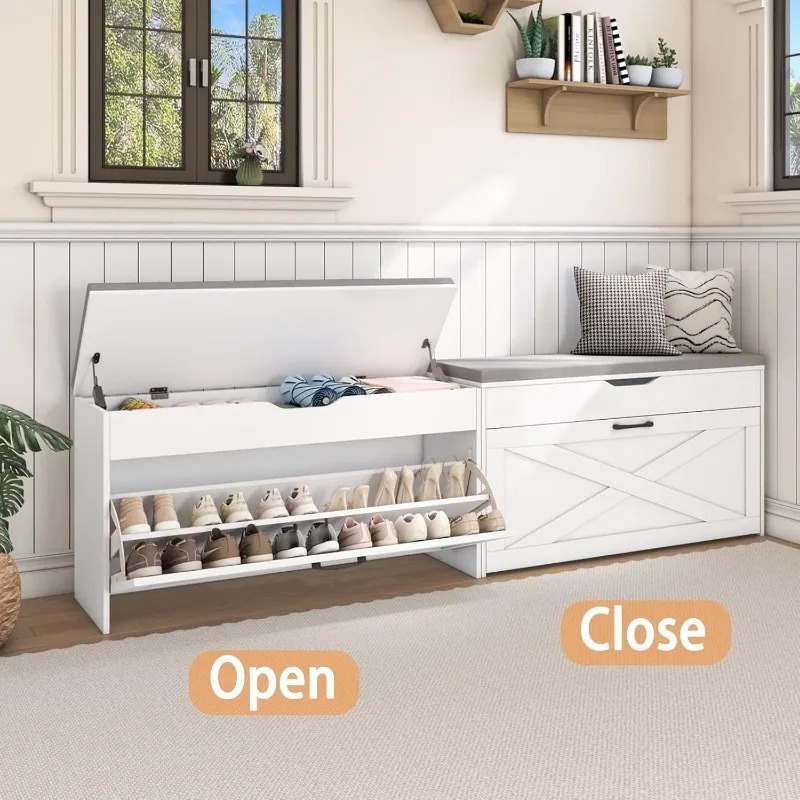
Strategic Placement
Most effective mudrooms are positioned at the most frequently used home entrance—often near the garage, side door, or back door. This location intercepts traffic and dirt before it reaches main living spaces. In homes with children or pets, this strategic placement becomes even more valuable for containing chaos.
Creating a truly functional transition space requires careful planning and organization, as detailed in our guide to designing functional mudrooms. For maximizing storage and organization, specialized mudroom bench cubbies keep items sorted while preventing floor clutter.
Entryway Bench with Cushion, Mudroom Bench with Cushion, Shoe Bench for Entryway
$1,186.63 Select options This product has multiple variants. The options may be chosen on the product pageCoat Rack Shoe Bench, Corner Entryway Bench, Corner Hall Tree, Shoe Bench for Entryway
$313.58 Select options This product has multiple variants. The options may be chosen on the product pageEntryway Bench with Back, Modern Entryway Bench, Shoe Bench for Entryway
Price range: $463.13 through $474.44 Select options This product has multiple variants. The options may be chosen on the product pageEntryway Bench with Shelf Storage, Shoe Bench for Entryway, Shoe Storage Bench
$194.08 Select options This product has multiple variants. The options may be chosen on the product pageCorner Entryway Bench, Entryway Bench with Cushion, Modern Entryway Bench, Shoe Bench for Entryway
$476.34 Select options This product has multiple variants. The options may be chosen on the product pageBench with Hooks and Storage, Entryway Hall Tree, Mudroom Bench with Cubbies, Mudroom Bench with Shoe Storage
$818.38 Select options This product has multiple variants. The options may be chosen on the product page
Beyond Mud: The Evolution of Mudroom Functionality
While the name has remained constant, the functionality of mudrooms has expanded significantly beyond just containing mud. Today’s mudrooms often incorporate multiple household functions:
Laundry Integration
Many modern homes combine mudroom and laundry facilities, creating a practical space for managing both outdoor elements and cleaning. This pairing makes sense: dirty clothing and sports uniforms can go directly into washing machines without tracking dirt through the house.
Pet Stations
Specialized areas for pet care have become common mudroom additions. These might include dog washing stations, feeding areas, or storage for pet supplies—all helping contain the mess that comes with animal care.
Home Organization Centers
Modern mudrooms frequently feature family command centers with mail slots, key hooks, calendars, and charging stations. These zones help organize day-to-day household operations in the same space where family members enter and exit.
Specialized Storage
Beyond basic hooks and cubbies, today’s mudrooms might include storage for specific activities and seasons: sports equipment organizers, seasonal decoration storage, or dedicated spaces for hobbies and outdoor pursuits.
Despite this functional expansion, the core purpose of containing outdoor elements remains central to the mudroom concept, justifying its continued straightforward name. The versatility of multi-functional mudroom benches reflects this evolution toward spaces that do more while maintaining their primary purpose. For those seeking practical storage solutions that adapt to multiple needs, entryway bench storage options provide flexibility with style.
Designing a Mudroom That Lives Up to Its Name
Creating a mudroom that truly deserves its title requires thoughtful planning that balances aesthetics with practical dirt management:
Climate-Specific Considerations
Effective mudrooms address local weather challenges:
– In snowy regions: Drainage systems, boot dryers, and extensive hanging space for bulky winter wear
– In rainy areas: Umbrella stands, waterproof storage, and quick-drying materials
– In sandy coastal locations: Closed storage to contain beach sand and brushes for cleaning
Family Size and Activities
The most functional mudrooms reflect household demographics:
– Families with children need lower hooks, smaller cubbies, and durable, washable surfaces
– Active households benefit from specialized storage for sports equipment and outdoor gear
– Pet owners require dedicated zones for leashes, toys, and cleaning supplies
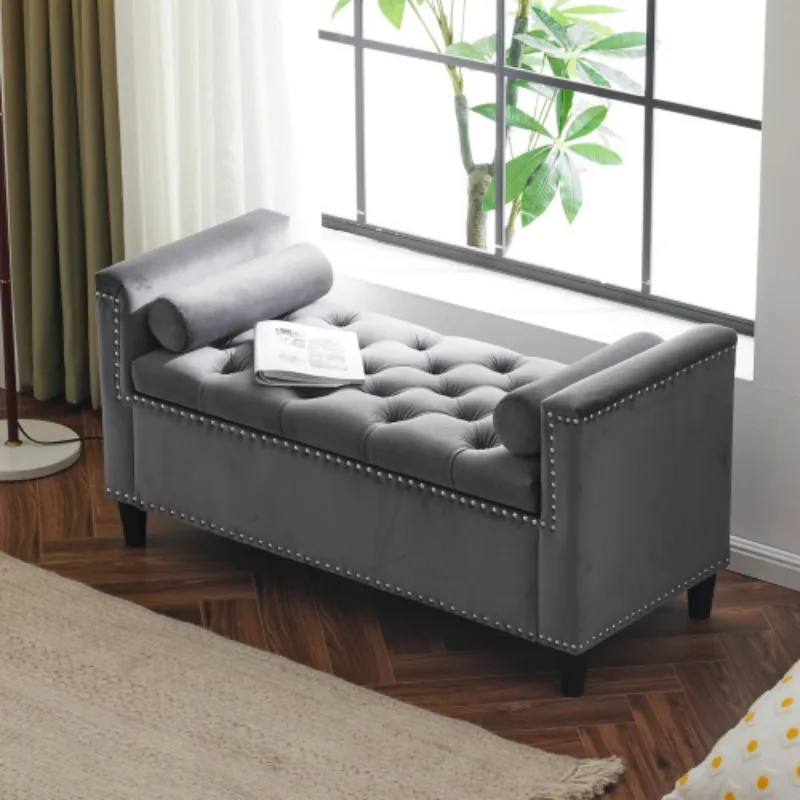
Space Optimization
Not every home has room for a dedicated mudroom. Creative solutions include:
– Converting closets into mini-mudrooms with strategic storage
– Using hallway walls for hooks and narrow benches
– Creating mudroom zones in garages or porches with weather-resistant materials
The key to successful design is ensuring the space can effectively contain dirt while remaining attractive enough to complement your home. Tips for planning perfect tiny mudrooms help maximize functionality even in limited spaces. For homes where footwear organization is a priority, specialized shoe bench mudroom furniture provides targeted solutions for containing dirt from footwear.
Is a Mudroom Still Necessary in Modern Homes?
With today’s paved driveways and modern materials, one might question whether a dedicated “mud” room remains necessary. However, several factors make these spaces more relevant than ever:
Does modern living still create “mud” situations?
Absolutely. While literal mud might be less common in urban settings, contemporary lifestyles generate plenty of outdoor debris. Think about:
– Children returning from sports practice with grass-stained uniforms and equipment
– Gardening enthusiasts tracking in soil and plant debris
– Hikers and outdoor enthusiasts with dusty gear and boots
– Pet owners managing muddy paws and wet fur after walks
Do clean-lined contemporary homes benefit from mudrooms?
Perhaps even more than traditional homes. Modern open floor plans and minimalist aesthetics make clutter and dirt more visible and disruptive. A dedicated transition space helps maintain the clean lines and uncluttered surfaces valued in contemporary design.
What about urban apartments and condos?
Even small homes benefit from mudroom functionality. Creative solutions like entryway nooks with hooks and narrow benches can provide the essential functions without requiring dedicated square footage. For compact spaces, our selection of best small benches for entryways offers space-efficient solutions that maintain mudroom functionality.
Frequently Asked Questions About Mudrooms
Can apartments have mudrooms?
While space constraints might prevent a dedicated room, apartment dwellers can create mudroom functionality in small entryways using wall-mounted hooks, narrow benches, and vertical storage solutions. Even a small landing area can incorporate the essential elements of dirt containment.
What’s the minimum size needed for an effective mudroom?
A functional mudroom can be created in as little as 16 square feet (roughly 4’ x 4’). The key isn’t size but organization—including vertical storage, multi-purpose furniture, and careful space planning. Even hallways can incorporate mudroom elements with thoughtful design.
Where is the best location for a mudroom in a home layout?
The ideal location connects to your home’s most frequently used entrance, typically near the garage, back door, or side entrance. This strategic placement intercepts dirt before it can spread through main living areas.
Are mudrooms only useful in certain climates?
While especially valuable in regions with snow, rain, or extreme seasons, mudrooms benefit homes in any climate. Even in dry areas, they help contain dust, sand, pollen, and outdoor debris while providing organizational benefits.
How can existing homes add mudroom functionality?
Many homes can convert underutilized spaces into mudroom areas:
– Repurposing part of a garage near the house entrance
– Converting a closet or pantry near a side door
– Adding organization systems to an existing hallway
– Enclosing a portion of a back porch
For homes with limited space, our guide to space-saving entryway ideas provides creative solutions that maximize functionality in minimal square footage.
The Mudroom’s Enduring Legacy: Why the Name Still Fits
As we’ve explored throughout this article, the straightforward name “mudroom” continues to accurately describe this space’s primary purpose, even as its functionality has expanded. While many room names have become disconnected from their original functions (we rarely limit our “living rooms” to formal entertaining as they were once intended), the mudroom remains true to its practical origins.
The name’s direct connection to function makes it immediately understandable to anyone, regardless of their familiarity with architectural terminology. There’s no confusion about what happens in a mudroom—it’s where we manage the transition between outdoors and indoors, containing the “mud” of daily life.
As our homes continue to evolve with changing lifestyles, the mudroom concept adapts while maintaining its core purpose. Whether incorporating technology, addressing new storage needs, or expanding to serve multiple functions, this practical space continues to protect our homes from the elements just as it has since its earliest incarnations.
The simplicity of the name “mudroom” reflects the straightforward value it brings to our homes—a dedicated space where practicality reigns and function truly meets form.

